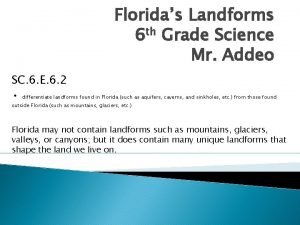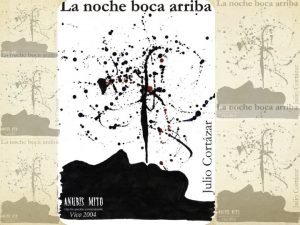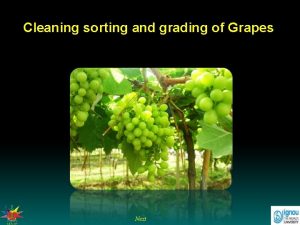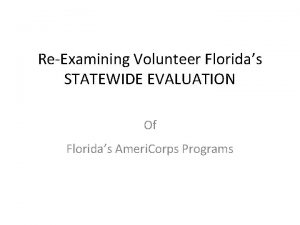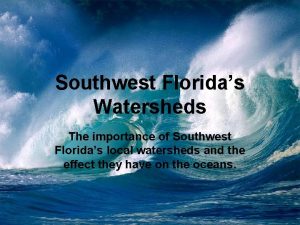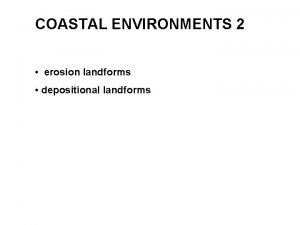Floridas Landforms 6 th Grade Science Mr Addeo








- Slides: 8

Florida’s Landforms 6 th Grade Science Mr. Addeo SC. 6. E. 6. 2 • differentiate landforms found in Florida (such as aquifers, caverns, and sinkholes, etc. ) from those found outside Florida (such as mountains, glaciers, etc. ) Florida may not contain landforms such as mountains, glaciers, valleys, or canyons; but it does contain many unique landforms that shape the land we live on.

Aquifer The main source of water for most of us in northeast and central Florida comes from underground aquifers. Aquifers can be thought of as vast underground, porous rocks that hold water and allow water to move through the holes within the rock. Aquifers can be composed of different types of earthen materials, such as sand, shell and limestone.

Barrier Islands They are known as barrier islands because they provide an essential barrier, blocking strong storm waves that would otherwise erode the mainland coast. This is especially true during strong storms like Hurricanes, which frequent the Florida coast.

Sand Dunes In physical geography, a dune is a hill of sand built by either wind or water flow. Dunes occur in different shapes and sizes, formed by interaction with the flow of air or water.

Caverns The Florida Cavern has dazzling formations of limestone stalactites, stalagmites, soda straws, flowstones and draperies. Florida Caverns is unusual for the state. The limestone caverns were formed over time, as water seeped into and dissolved local bedrock, forming stalagmites, stalactites and flowstones.

Wetlands are ecosystems typically found on the transition between terrestrial and aquatic systems. Florida has about 11 million acres of wetlands, more than any of the other 47 conterminous States. The abundance of wetlands in Florida is due primarily to the low, flat terrain and plentiful rainfall. Most of Florida's wetlands are forested freshwater habitats on stream flood plains, in small depressions and ponds, and covering wet flatwoods. The Everglades, in southern Florida, is a large freshwater marsh that once received surface- and ground-water flows from the Kissimmee River-Lake Okeechobee Basin but which now depends on water releases from canals and water-retention areas.

Rivers A river is a large flowing body of fresh water that originates from a spring or where rainwater and snow collects, usually in mountains, and runs across land until it reaches another larger body of water, like the ocean. Rivers are important because they sustain life, are part of the Earth's water cycle, and are responsible for sculpting the Earth's topography as they carry huge quantities of water and sediment from the land to the sea The St. Johns River, one of only a few rivers in the Western Hemisphere that actually runs flows north, can get big, wide and rough. But in the upper reaches, especially above Blue Springs Run, the river is still as wild as it was 250 years ago when the first explorers paddled its waters.

Sinkholes are part of the slow, natural process of erosion in Florida’s limestone terrain that occur over thousands of years. These common geologic phenomena generally occur where the limestone is within a few hundred feet of the land’s surface. Though most are only 10 to 12 feet in diameter, sinkholes have been known to expand to hundreds of feet in diameter. Many of central and north Florida’s lakes actually are the result of old sinkholes.
